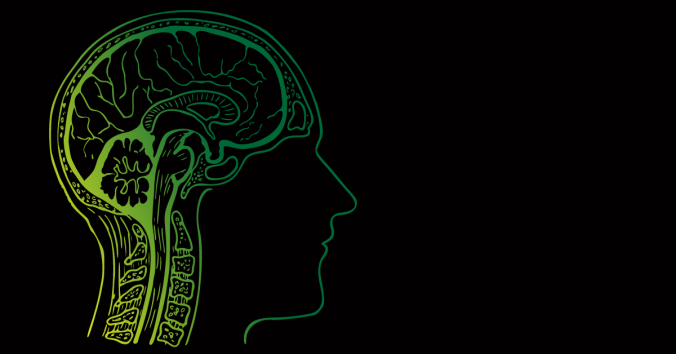 The emergence of several national level brain initiatives and the priority given to neuroscientific research make it important to examine the values underpinning the research, and to address the ethical, social, legal, philosophical, and regulatory issues that it raises.
The emergence of several national level brain initiatives and the priority given to neuroscientific research make it important to examine the values underpinning the research, and to address the ethical, social, legal, philosophical, and regulatory issues that it raises.
Neuroscientific insights allow us to understand more about the human brain: about its dynamic nature and about its disorders. These insights also provide the basis for potentially manipulating the brain through neurotechnology and pharmacotherapy. Research in neuroscience thus raises multiple concerns: From questions about the ethical significance of natural and engineered neural circuitry, to the issue of how a biological model or a neuroscientific account of brain disease might impact individuals, communities, and societies at large. From how to protect human brain data to how to determine and guard against possible misuses of neuroscientific findings.
Furthermore, the development and applications of neuro-technology to alleviate symptoms or even enhance the human brain raise further concerns, such as their potential impact on the personality, agency, and autonomy of some users. Indeed, some empirical findings appear to even challenge long held conceptions about who we are, the capacity to choose freely, consciousness, and moral responsibility.
Neuroethics is the field of study devoted to examining these critical issues. Unfortunately, it has sometimes been reduced to a subfield of applied ethics understood as a merely procedural approach. However, in our understanding, neuroethics is methodologically much richer. It is concerned not just with using ethical theory to address normative issues about right and wrong, but notably with providing needed conceptual clarification of the relevant neuroscientific and philosophical notions. Only by having conceptual clarity about the challenges presented will we be able to address and adequately manage them.
So understood, neuroethics plays a key role in the Human Brain Project (HBP). The HBP is a European Community Flagship Project of Information and Computing Technologies (ICT). It proposes that to achieve a fuller understanding of the brain, it is necessary to integrate the massive volumes of both already available data and new data coming from labs around the world. Expected outcomes include the creation and operation of an ICT infrastructure for neuroscience and brain related research in medicine and computing. The goal is to achieve a multilevel understanding of the brain (from genes to cognition), its diseases and the effects of drugs (allowing early diagnoses and personalised treatments), and to capture the brain’s computational capabilities.
The HBP is funded by the European Commission in the framework of the EU’s Horizon 2020 research-funding programme. The programme promotes responsible research and innovation (RRI). RRI is generally understood as an interactive process that engages social actors, researchers, and innovators who must be mutually responsive and work towards the ethical permissibility of the relevant research and its products. The goal is to ensure that scientific progress and innovation are responsible and sustainable: that they increase individual and societal flourishing and maximize the common good.
To develop, broaden, and enhance RRI within the project, the HBP established the Ethics and Society subproject. Ethics and Society is structured around a number of RRI activities such as foresight analysis (to identify at an early stage ethical and social concerns), citizens’ engagement (to promote involvement with different points of view and to strengthen public dialogue), and ethics support (to carry out research in applied ethics and to develop principles and mechanisms that ensure that ethical issues raised by research subprojects are communicated and managed and that HBP researchers comply with ethical codes and legal norms).
Neuroethical reflection plays a key role in this integration of social, scientific, and ethical inquiry. Notably, in the HBP such reflection includes conceptual and philosophical analysis. Insofar as it does, neuroethics aims to offer more than assistance to neuroscientists and social scientists in identifying the social, political, and cultural components of the research. Via conceptual analysis, neuroethics attempts to open a productive space within the HBP for examining the relevant issues, carrying out self-critical analysis, and providing the necessary background to examine potential impacts and issues raised. Neuroethical reflection in the HBP does not exclusively focus on ethical applications and normative guidance. Rather, it takes as a starting point the view that the full range of issues raised by neuroscience cannot be adequately dealt with without also focusing on the construction of knowledge, the meaning of the relevant notions, and the legitimacy of the various interpretations of relevant scientific findings.
At present, the importance of neuroethics is not in question. It is a key concern of the International Brain Initiative, and the different international brain projects are trying to integrate neuroethics into their research in different ways. What continues to be unique to neuroethics in the HBP, however, is its commitment to the idea that making progress in addressing the host of ethical, social, legal, regulatory and philosophical issues raised by brain research to a great extent depends on a conceptual neuroethical approach. It enables constructive critical alertness and a thought-out methodology that can achieve both substantial scientific ground and conceptual clarity.
If you want to read more, see below a list of publications on which this post is based.
Arleen Salles
Delegates eaGNS. Neuroethics Questions to Guide Ethical Research in the International Brain Initiatives. Neuron. 2018.
Evers K, Salles A, Farisco M. Theoretical Framing for Neuroethics: The Need for a Conceptual Aproach. In: Racine E, Aspler, J., editor. Debates About Neuroethics: Springer; 2017.
Salles A, Evers K. Social Neuroscience and Neuroethics: A Fruitful Synergy. In: Ibanez A, Sedeno, L., Garcia, A., editor. Social Neuroscience and Social Science: The Missing Link: Springer; 2017. p. 531-46.
Farisco M, Salles A, Evers K. Neuroethics: A Conceptual Approach. Camb Q Healthc Ethics. 2018;27(4):717-27.
Salles A, Evers K, Farisco M. Neuroethics and Philosophy in Responsible Research and Innovation: The Case of the Human Brain Project. Neuroethics. 2018.
Salles A, Bjaalie JG, Evers K, Farisco M, Fothergill BT, Guerrero M, et al. The Human Brain Project: Responsible Brain Research for the Benefit of Society. Neuron. 2019;101(3):380-4.










 We live in a global society, which means there are several actors that regulate both research and services directed at consumers. It is time again for our newsletter on current issues in biobank ethics and law. This time, Biobank Perspectives lets you read about the legal aspects of direct-to-consumer genetic testing.
We live in a global society, which means there are several actors that regulate both research and services directed at consumers. It is time again for our newsletter on current issues in biobank ethics and law. This time, Biobank Perspectives lets you read about the legal aspects of direct-to-consumer genetic testing. 
